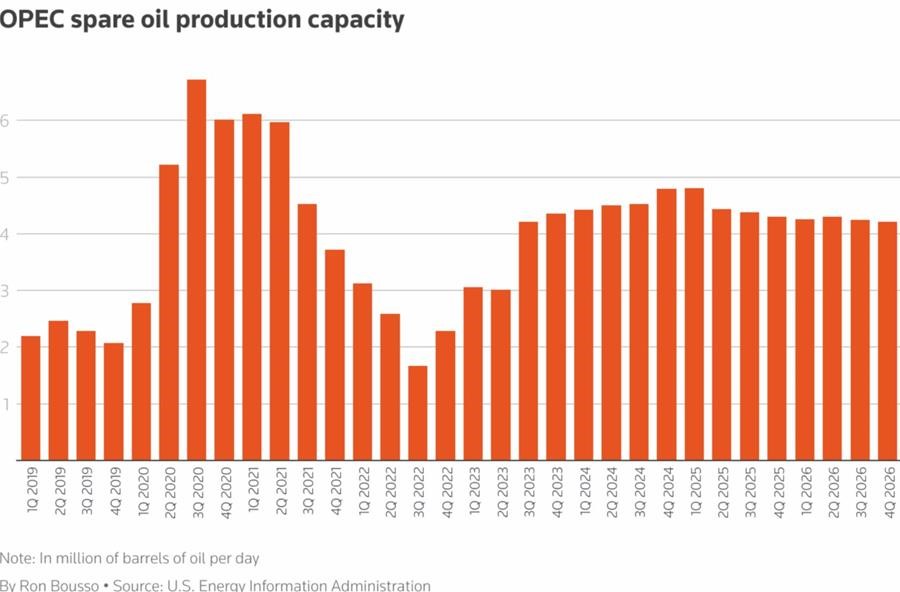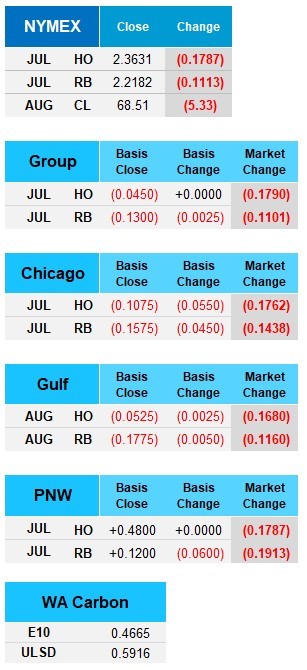United States Israeli Airstrikes: U.S. and Israeli airstrikes targeting Iranian nuclear facilities had lead crude oil prices climbing over 2% to around $75 a barrel, marking its highest level since January 2025. The market priced in heightened geopolitical risk, particularly around potential Iranian retaliation and disruptions to supply routes through the Strait of Hormuz. Although Crude Oil briefly spiked above $75 a barrel, it later settled as traders weighed the scale of conflict versus available spare capacity. Analysts warn that further escalation, especially any coordinated closure of the strait, could push prices sharply higher. This development reflects how Middle East instability continues to reinforce a significant risk premium in crude oil assessments.
OPEC+: Crude Oil demand in the U.S. market has softened as OPEC+ producers, led by Saudi Arabia and Russia, added approximately 1.37 million barrels per day of supply since April according to Reuters. The surge in global oil availability has pressured U.S. exports, which fell from 4 million barrels per day in April to 3 million barrels per day in May. Producers in Europe and Asia now prefer competing light to medium international grades, further eroding U.S. crude’s market shares. The shift reflects how global supply expansion by OPEC+ is undercutting crude oil pricing even amid steady demand recovery. As international supply depth grows, the U.S. crude faces increased headwinds despite seasonal consumption upticks.
Stock Market Investments: The U.S. airstrike that obliterated Iran's key nuclear enrichment facilities has heightened geopolitical tensions and raised expectations for a surge in oil prices and market volatility. Investors anticipate a rush to other assets and a possible stock market selloff when major markets reopen, though Gulf markets initially reacted calmly. Iran has vowed retaliation and is weighing all options, including targeting U.S. interests or disrupting oil flows through the vital Strait of Hormuz. Analysts warn that a strong Iranian response could push oil prices toward $100 per barrel, with significant implications for global inflation and central bank rate decisions. While some believe the show of U.S. force might drive Iran toward a peace deal, the nearer outlook is dominated by uncertainty and elevated energy risk.
Market Overview: Crude traded near $75-76 per barrel, subtly up from recent levels, driven by a blend of geopolitical tension, inventory dynamics, and shifting global supply. Geopolitical risk has injected a premium into oil, but this has been partially offset by OPEC+ ramping up output, which introduces downward pressure. The sharp U.S. crude inventory draw of 11.5 million barrels reflected tightening balances, but blurred by stable refinery run rates and ample refined product stocks. Meanwhile, gasoline futures have edged higher though refinery capacity constraints and strong summer driving patterns are keeping actual pump prices fairly contained. Domestic gasoline inventories rose slightly, providing some cushion even as demand remains solid. On balance, crude oil prices are trending up, although in a volatile range, as markets weigh escalating Middle East tensions against expanding OPEC+ supply. The trajectory for gasoline will follow crude, tempered by refining activity and demand seasonality, with risks rooted in geopolitics and further OPEC+ output decisions. Energy futures are slightly bearish to start out the week as crude is down $0.11 to $73.73, HO is down $0.0187 to $2.5231, and RBOB is down $0.0037 to $2.3258.

Historically, major oil supply disruptions have triggered sharp but short lived price spikes, with markets often stabilizing within months due to spare capacity and demand curtailment. Examples include the Gulf Wars and Russia’s 2022 invasion of Ukraine, where oil prices surged but quickly returned to pre-conflict levels. Today, OPEC+ holds around 5.7 million barrels per day of spare capacity, mainly from Saudi Arabia and the UAE, offering a buffer against shocks. However, most of their oil exports transit the Strait of Hormuz, making current risks more concentrated. While alternative pipelines exist for Saudi Arabia and the UAE, Iraq, Kuwait, and Qatar remain heavily dependent on the strait. Iran might avoid closing the strait to preserve its own export flows and may eventually return to negotiations rather than escalating conflict. Still, energy markets are likely to react to the U.S. strikes with an immediate jump in oil prices, though any disruption, unless prolonged, may prove temporary.

The energy complex saw a bearish day to start out the week as oil prices fell on Monday after Iran launched a missile attack on a U.S. base in Qatar in retaliation for U.S. strikes on Iranian nuclear facilities. Despite fears of escalation, oil flows through the Strait of Hormuz remained unaffected, easing immediate supply concerns. Analysts noted that Iran’s retaliation appeared limited to military targets and unlikely to disrupt energy infrastructure, though two supertankers near the strait altered course as a precaution. President Trump urged the U.S. Department of Energy to increase drilling to keep oil prices down amid geopolitical tensions. Market analysts suggested that unless further escalation occurs, the geopolitical risk premium may fade, although HSBC warned prices could spike if there are disruptions in the Strait of Hormuz. Some oilfield staff from companies like BP, Total Energies, and Eni were evacuated from Iraq as a precaution. At the end of today crude oil is down $5.33 to $68.51 a barrel, HO down to $2.3631, and RBOB down to $2.2182.

